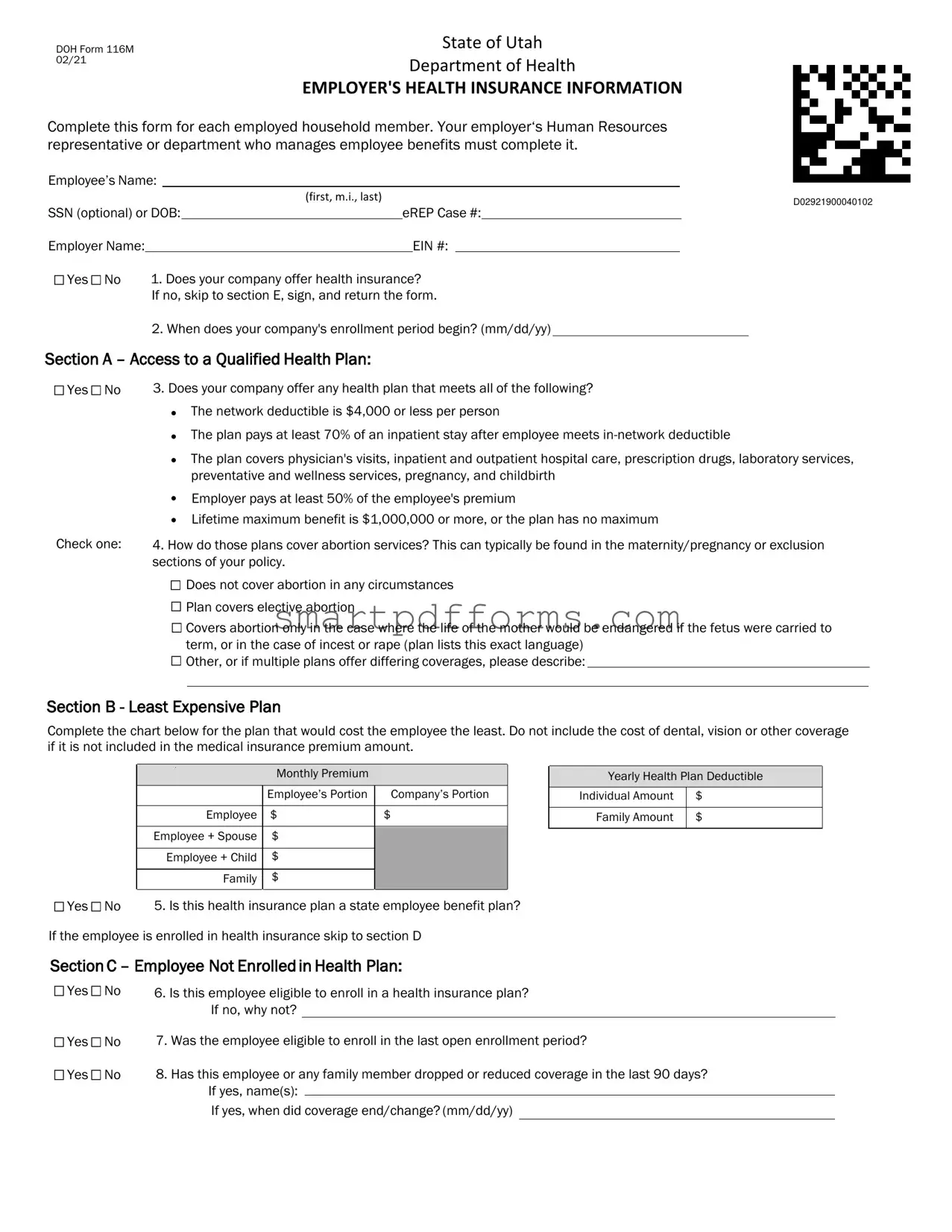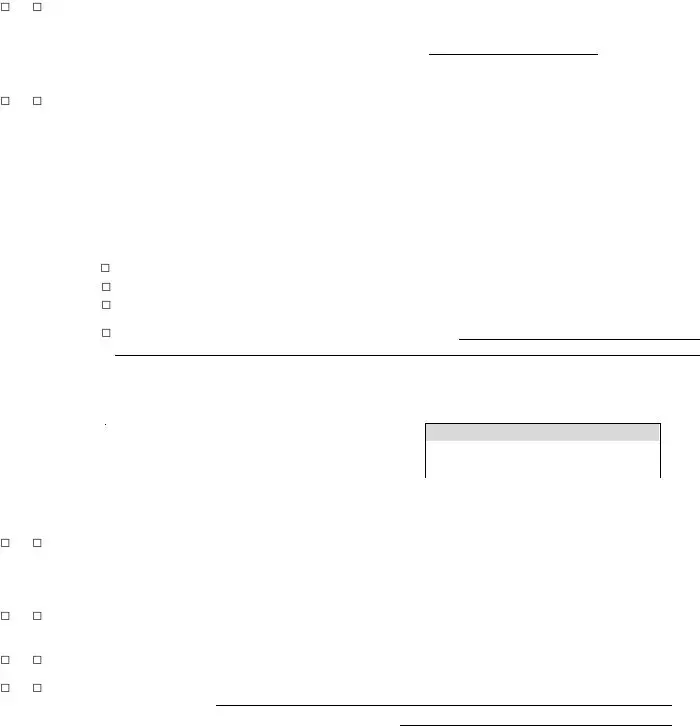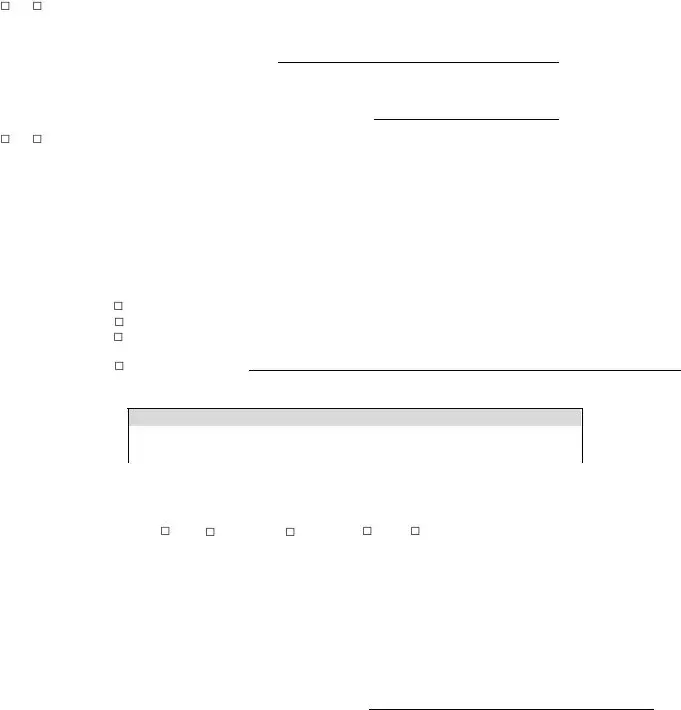Blank 116M PDF Template
The DOH Form 116M serves a critical role for employed household members in Utah, providing a detailed account of an employee's health insurance information as completed by their employer's Human Resources department. Key details include eligibility, coverage specifics such as deductible amounts, premium contributions, and specifics regarding services covered, like maternity care and abortion services. For those navigating health insurance options or updating their household's employment information, understanding and timely submission of the 116M form is essential. Ensure you're fully informed by clicking the button below to fill out your form.
Make This Document Now


